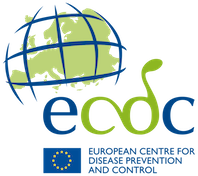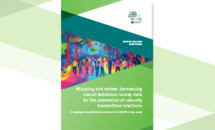Mapping and review: harnessing sexual behaviour survey data for the prevention of sexually transmitted infections
This report focuses on the results of a mapping of sexual behaviour surveys conducted in the European Union/European Economic Area (EU/EEA) and the United Kingdom (UK) from 2019 to 2024. The mapping provides information on the availability of relevant sexual behaviour survey data, which is crucial to help understand and prevent the acquisition and transmission of sexually transmitted infections (STIs). Surveys were identified via searches in scientific databases and via the ECDC STI network. Data reported in identified surveys were explored to generate insights on the useability and applicability of the survey data for understanding sexual behaviour.
The mapping identified 35 relevant and representative surveys on sexual health and behaviour performed between 2019 and 2024 in the EU/EEA and the UK. Of the 35 surveys, 31 were repeat surveys, i.e. part of a series, 21 of which were part of the Health Behaviour in School Children (HBSC) series of surveys. Other repeated surveys found include the National Survey of Sexual Attitudes and Lifestyles (Natsal) from the UK, Youth Knowledge Attitude and Behaviour (UngKAB) from Sweden, and Sex Under 25 from the Netherlands, some of which had their latest edition in progress as of the mapping. Data from the HBSC surveys, as well as other repeated surveys in Estonia, the Netherlands, and Sweden, indicate a potential decrease in condom use in the younger population (around 15–25 years of age) in these countries. Data from the HBSC data browser for EU/EEA countries and the UK show a steady decrease in self-reported condom use at last intercourse for both boys and girls aged 15 years for the years 2014, 2018, and 2022.
The rich data collected in surveys are similar but not always comparable. There is an inconsistency in the terminology used to capture sexual behaviours and partner types, due to the complex and subjective nature of these issues. Other challenges to comparability include differences in the survey items used to measure the behaviours between survey rounds, countries, and over time.
The mapping shed light on the value of sexual behaviour data for STI prevention and control, as well as the lack of comparability across data sources due to diversity in methods and terminology used. This diversity is related to the constraints faced by researchers such as a lack of resources, and sociocultural differences that are addressed using different solutions based on context. These same constraints, particularly shortage of time and high costs involved, also prevent the implementation of large-scale surveys on sexual behaviour.
The mapping also highlighted ways to make behavioural data collection more robust, comparable, and applicable to the prevention and control of STIs. This can be accomplished, for instance, by clearly defining terminology used, as well as including core sexual health and behaviour indicators in EU-wide general health surveys, thereby allowing for comparisons over time and between countries. Conducting European level sexual behaviour surveys and facilitating behavioural data repositing and comparison could improve how sexual behaviour data informs the prevention and control of STIs.








